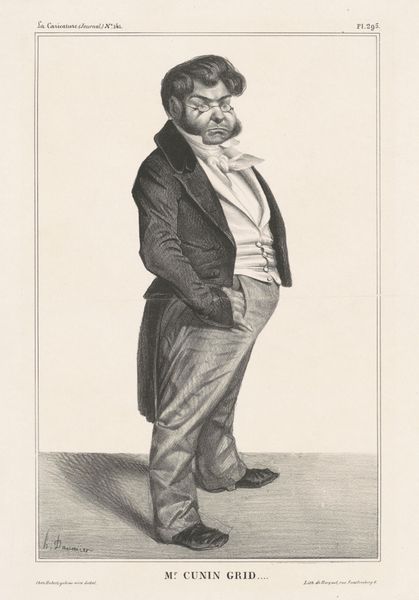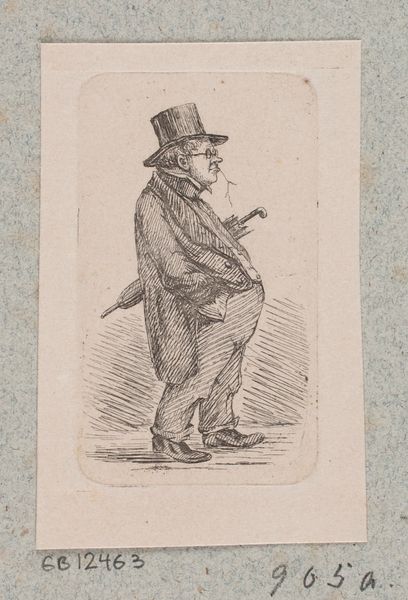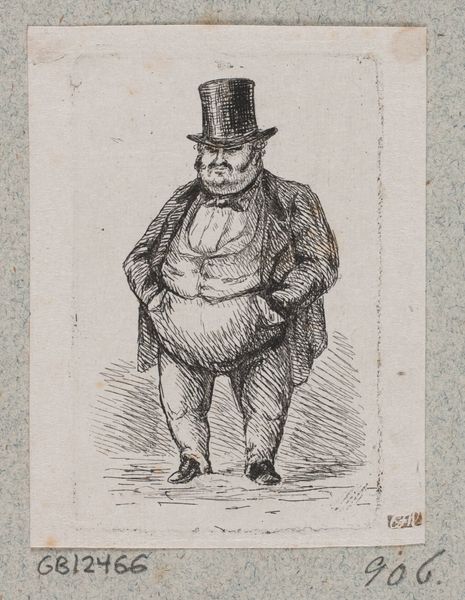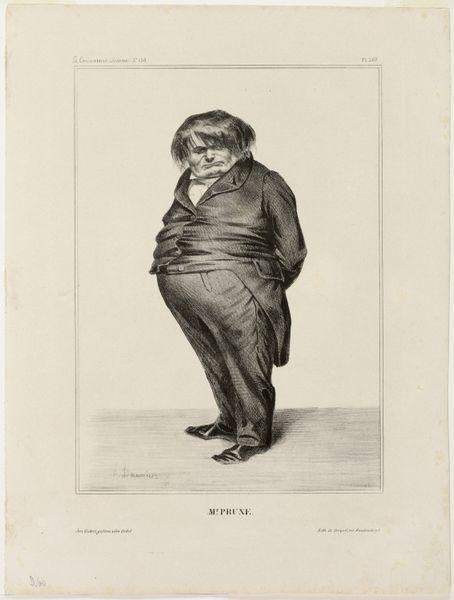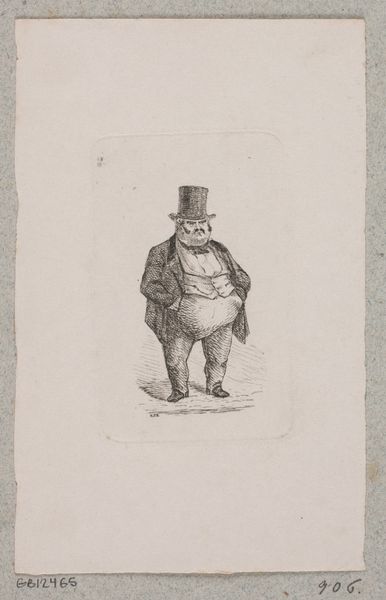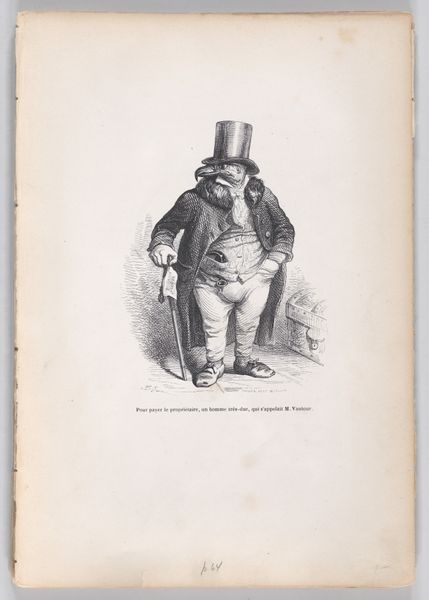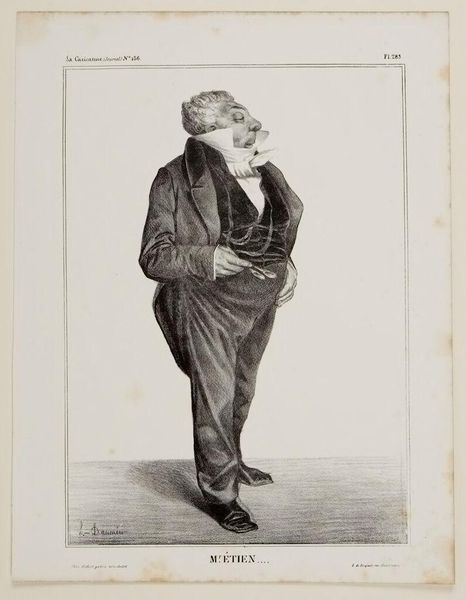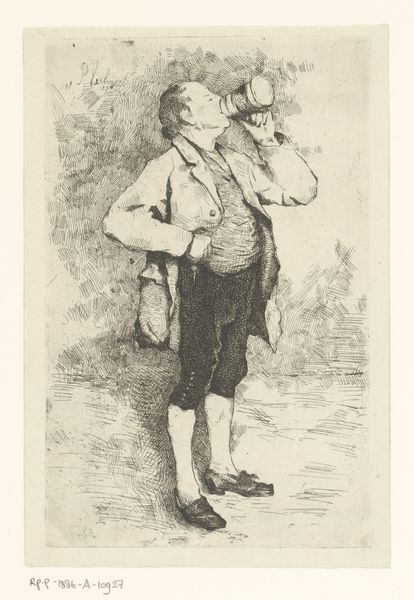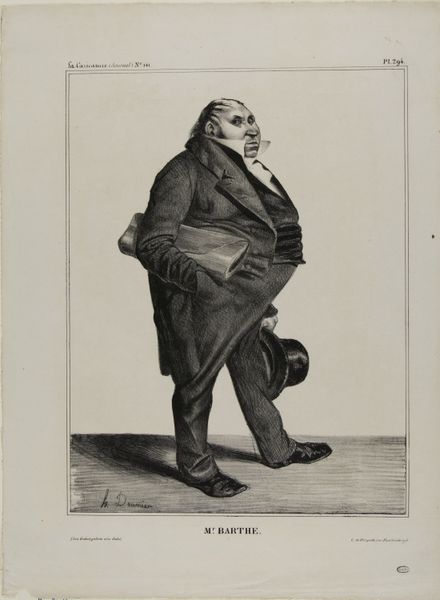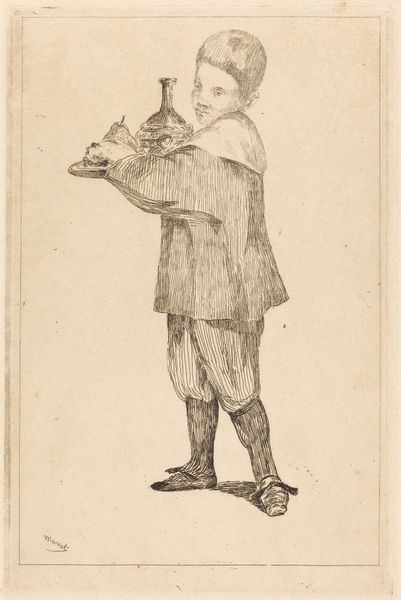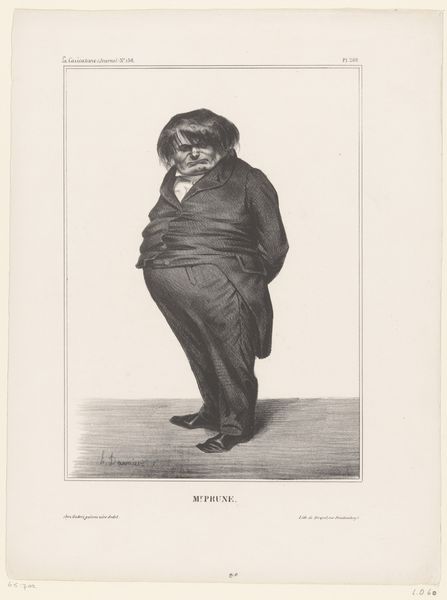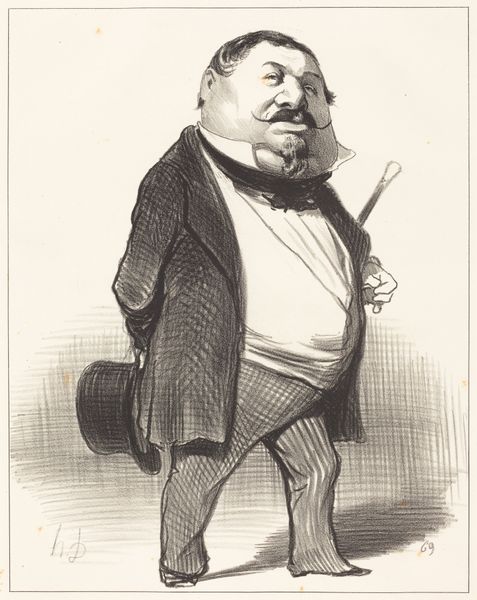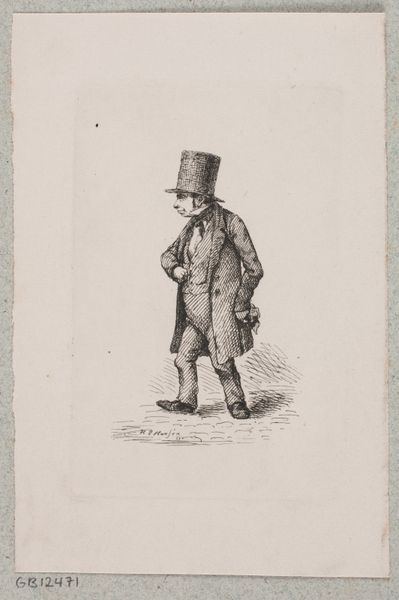
drawing, pencil
#
portrait
#
drawing
#
book
#
pencil sketch
#
portrait reference
#
pencil drawing
#
romanticism
#
pencil
#
portrait drawing
#
genre-painting
#
history-painting
#
realism
Dimensions: height 345 mm, width 226 mm
Copyright: Rijks Museum: Open Domain
Curator: Look at this lovely pencil drawing from around 1848. It’s titled "Portret van rondreizende boekhandelaar Thomas 'Tommy' Osborne," which translates to "Portrait of the traveling bookseller Thomas 'Tommy' Osborne." Editor: It has such an unassuming charm! There's a sweetness to how he's presenting a book in his hand as if he is inviting you to browse his wares. But also an almost Dickensian shadow hovering around his face, the slight crooked smile... It intrigues me. Curator: I’m drawn to its role in representing a figure from the burgeoning world of literacy and the book trade in the mid-19th century. Traveling booksellers played a vital role in disseminating knowledge to communities lacking access to established bookshops, so understanding how art framed them socially tells us a great deal. Editor: Absolutely. It seems to humanize and almost romanticizes a working-class figure. Observe his attire. It is rather worn out for what would have been his profession. Perhaps, even in his day, it spoke to the accessibility of literature for a broader audience rather than the upper echelons. I like how the drawing celebrates the itinerant figure too. How did he make ends meet? And in that moment in history, what would an average bookseller advocate for? Curator: His trade was indeed dependent on a receptive public and his drawing is part of a print designed to promote literacy which, during that era, increasingly intertwined with political and social reform movements. We can view him within broader conversations about class and accessibility during that time. The artist seems keen to elevate him. Editor: It is not necessarily something I can verbalize, but as you say that I get this gut feeling of compassion. It's in the meticulous detail of the clothing but especially how the bag of books on his side appears slightly worn but overfull. Perhaps it stands as a historical record, of an otherwise forgotten member of our literary fabric. I find his resilience quietly captivating. Curator: The very act of creating a portrait of such an ordinary person underscores the democratization of art, moving away from solely depicting elites and historical figures, giving form and image to our conception of working-class citizens. Editor: I think it speaks of an earlier version of the self-made entrepreneurial dream and that through accessible arts, crafts and reading practices we come a bit closer to seeing and honoring everyday histories.
Comments
No comments
Be the first to comment and join the conversation on the ultimate creative platform.
